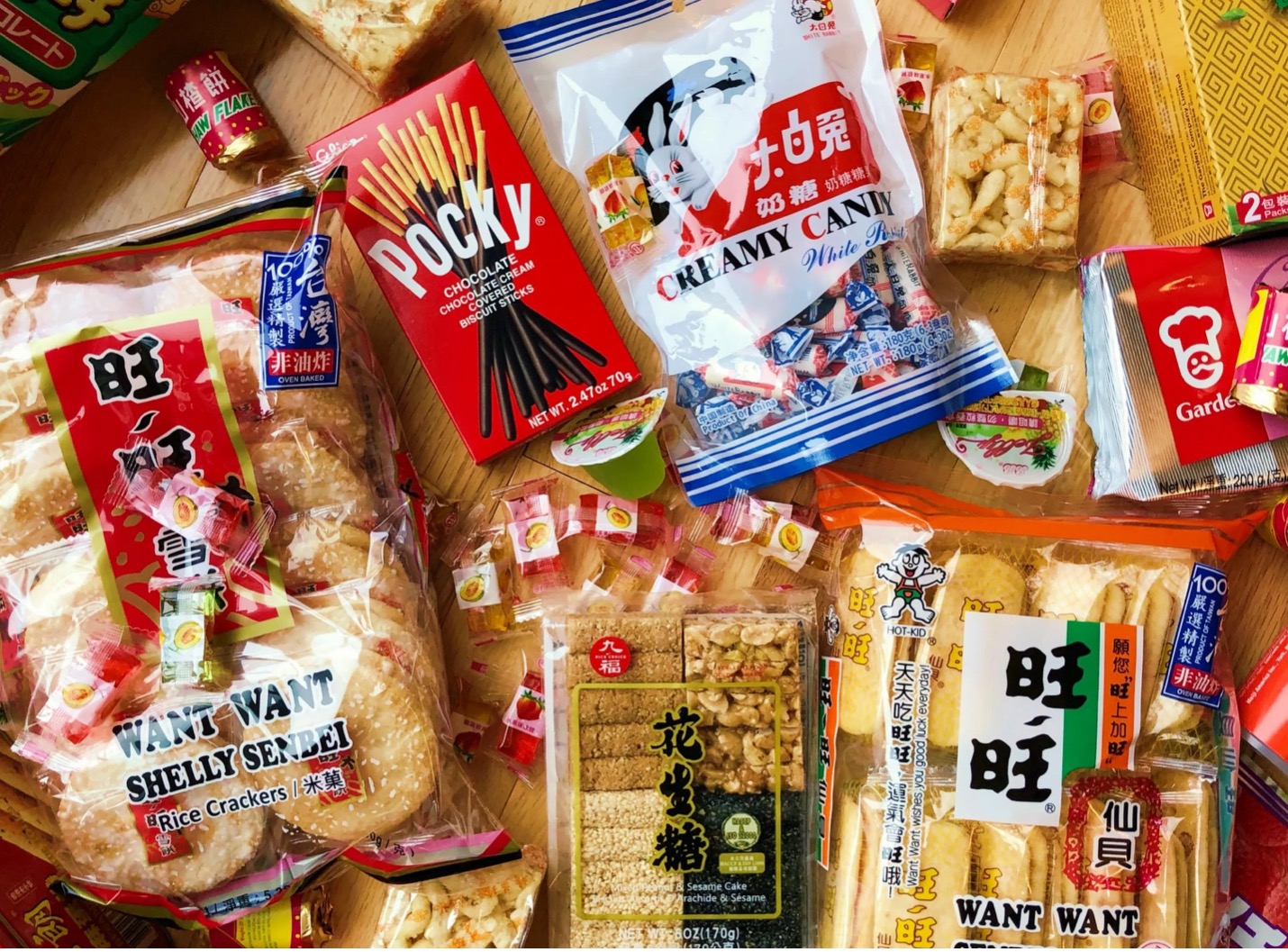In Chinese, the word for snack is “点心”, which literally translates into “touching the heart”. Such reflects the integral role of snacking and snack foods in the lives of Chinese, a historical phenomenon persevering into the present day. Beyond simply purchasing for taste and satiation, consumers snack as a larger movement to participate in social trends, pay homage to the country’s rich food culture, and socialize with loved ones. The incredible diversity of the market thus fulfills both individual craving, but also a need for cultural expression. China’s snack market boasts a wide variety of flavor and texture profiles, ranging from chewy and spicy latiao to sweet, pillowy dim sum.
Culturally, snacks and food as a whole play crucial roles in holiday celebrations. Eating mooncakes with family for Mid-Autumn, gifting sweets for Chinese New Year, and making zongzi for Duan Wu are amongst some of the most prominent examples of the intersection between snacks and culture. Snacks such as nuts, sweet pastries, and even meat are often paired with tea, a cultural tradition that has also led to the rise of a tea market with classical and modern twists.
On a more casual level, snacks are seen as social currency — sunflower seeds are practically synonymous with the act of sitting and chatting with friends.
Varied snack distribution channels
Supermarkets have traditionally been the primary distributors of snacks, but the rise of the e-commerce sphere in recent years has led online retail to be an increasingly significant mode of purchase. Despite this, the in-person shopping experience remains strong, but is becoming increasingly more diversified with the rise of various specialty snack stores focusing on different snacking niches.

Rise of specialty snack stores
A recent trend within the physical retail space for the Chinese snack market has been the emergence of specialty snack stores that are gradually beating out traditional supermarket purchasing channels, especially in the emerging-tier city market. These specialty snack stores are effective at capturing the market with competitive pricing with the elimination of a middleman. These stores also push bulk-pricing model, relying on volume sales as another means of maintaining lower prices.
Key players within the specialty snack store market include Busy For You, Laiyifen, Super Ming. Busy For You draws in customers with giant versions of typical snacks and cheap, high-volume snacks, while Laiyifen is more brand-oriented and emphasizes their own brands of snacks.

Another prominent type of themed specialty snack store bases their business model on capturing the nostalgia of previous decades. This yearning for nostalgia of the past is reflected in Douyin trends where accounts employ a mix storytelling products in order to engage in nostalgia marketing.

Booming e-commerce snack retailers
Recent rise in online consumption through websites such as Pinduoduo, Tmall, and JD.com also mirror a rise in virtual purchasing as a means of acquiring snacks.
In addition to simply serving as purchasing channel, social media is a part of the online sphere that has increasingly driven purchases, with the market being defined by “internet famous” snacks that 43.95% of consumers choose out of curiosity.
Snack market localization
The variety in the Chinese snack market reflects regional patterns, where specialty flavors of regional cuisines are integrated into local snacking preferences and behaviors. Regional flavors such as Sichuan and Hunan inclination towards numbing spicy, milder, wheat-based pastries of the northern provinces, and the fresh, sweeter flavor profiles of the southern Canton regions, are reflected in the available local snacks.
Preserving regional flavors are also a source of local identity and regional pride in addition to influencing general palate tastes. Such importance of regional specialization is demonstrated in the hyper localization of flavor profiles for products developed by larger, more international brands such as Frito Lay and Coca-Cola.


China’s snack market in emerging-tier cities
Another important distinction within the customer segmentation of China’s snack market is the difference in snack preference of emerging-tier city consumers compared to high-tier city consumers. According to our 2025 China emerging-market report, consumers in in lower-tier cities show greater interest in snacks and dishes with bold flavors compared to those in high-tier cities. Thus, the most favored snacks of the emerging-tier market trend towards bold, generally spicy flavors.
General market trends are captured by the most-discussed topics relating to the snack market including Meituan, diabetes, and convenience store. As preference for specialty snack stores and convenience stores continue to increase in the emerging-tier market, emerging-tier cities pose a significant opportunity for expansion of the Chinese snack market.
Additionally, increasing incomes and leisure time is also leading to a trend towards a more cognizant relationship with health and fitness that could influence purchasing behavior in the future. However, as of now, emerging-tier city consumers still tend to focus on quick fixes to weight rather than overall lifestyle changes.
Key takeaways: increasing diversification for every snacking niche
- Consumers purchase snacks for social and cultural reasons beyond taste — snacks are a way of connecting to others and participating in trends.
- Traditional supermarkets continue to dominate retail channels, but increasing demand for specialty snacks and novel experiences has given rise to specialty and convenience stores as alternative purchasing locations.
- E-commerce websites make purchasing even easier and social media trends increasingly define what makes a snack “popular”.
- Product diversity also reflects regional preferences, with regional pride and identity being a target for foreign companies creating China-specific flavors
- Emerging-tier city consumers are characterized by different preferences compared to higher tier city consumers, with stronger preferences for bold flavors and specialty stores.





